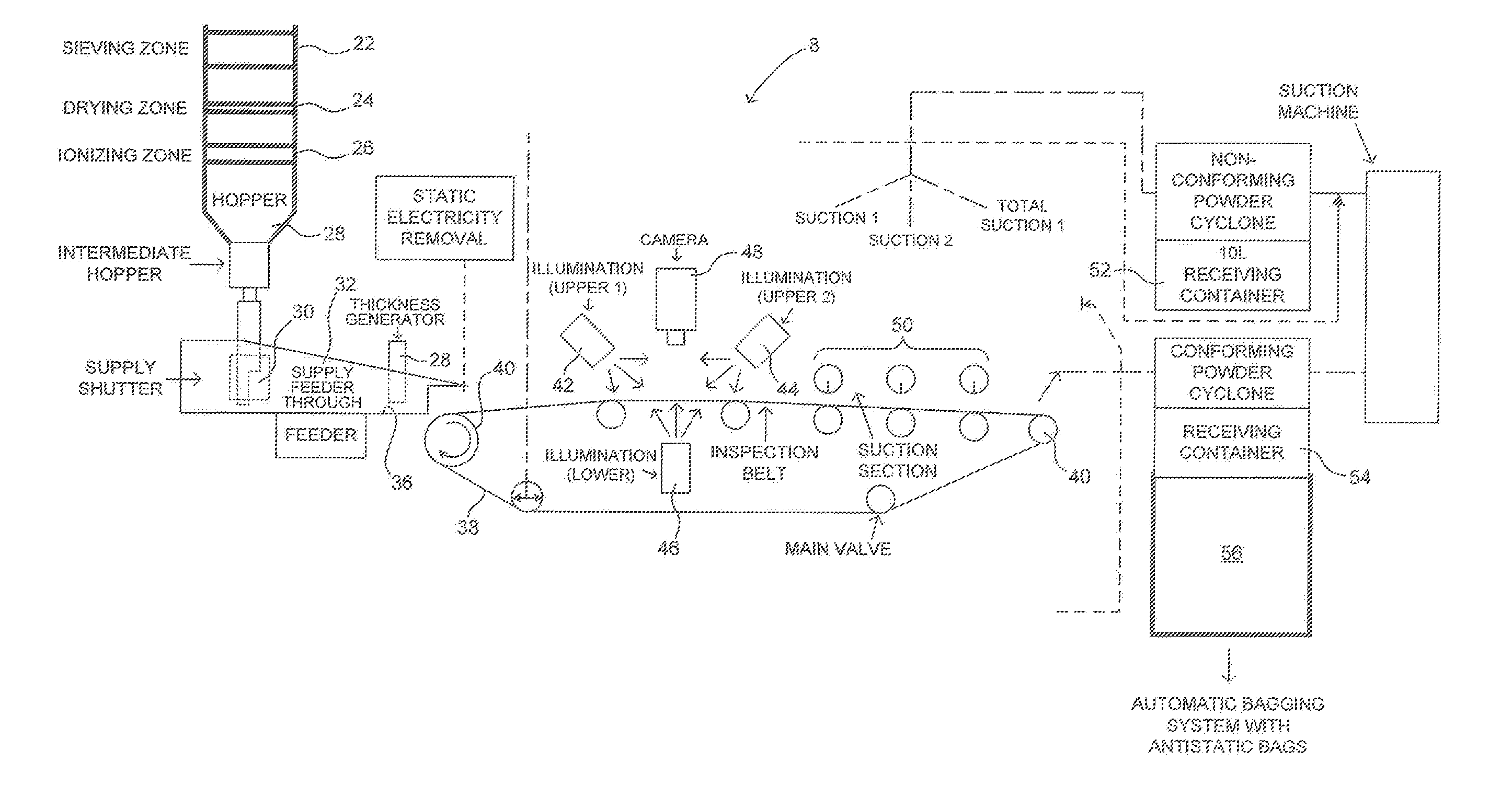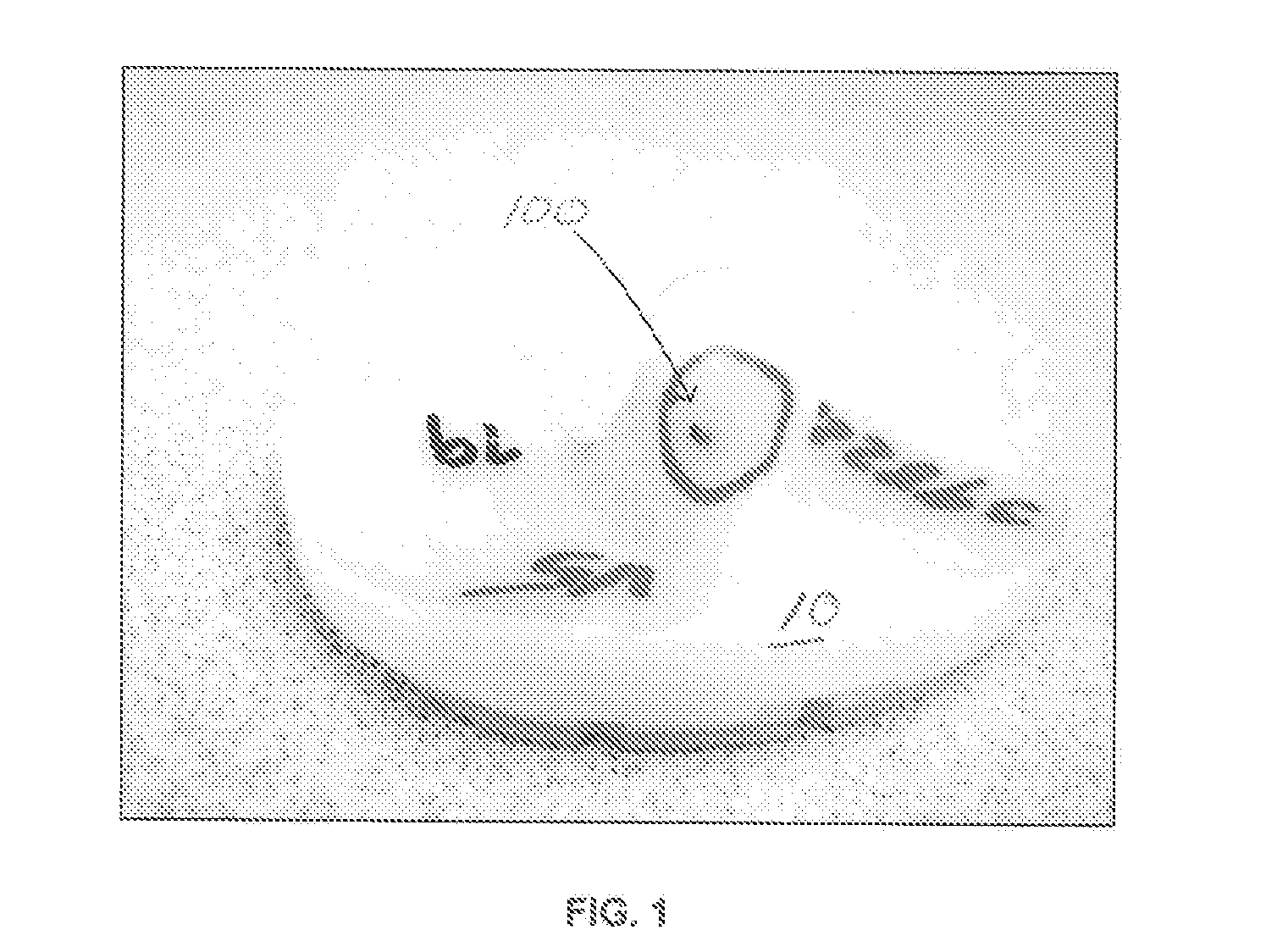Process for removing contaminants from polymeric powders
a technology of polymeric powder and contaminants, applied in the direction of packaging goods type, liquid handling, bundling machine details, etc., can solve the problems of high cost of parts rejected as scrap, additional manufacturing process visual inspection steps, and inability to detect, sort and remove., so as to avoid shadowing, improve detection accuracy, and facilitate contaminant detection
- Summary
- Abstract
- Description
- Claims
- Application Information
AI Technical Summary
Benefits of technology
Problems solved by technology
Method used
Image
Examples
Embodiment Construction
[0034]Referring to FIGS. 1, 3 and 3A, there is shown a series of completed tibial bearing components 10, 12, 14 and 16 manufactured from rod or bar stock made of ultrahigh molecular weight polyethylene (UHMWPE), which have failed a standard inspection test. As can be seen in components 10, 12 and 14, large darkish color contaminants 100 are present in the completely manufactured tibial implants. Because of these contaminants, the manufactured parts had to be scrapped with the obvious entire loss of the cost of the material and manufacturing process. In some cases, manufactured UHMWPE bearings for tibial, patella, glenoid, and acetabular implants had a scrap rate of 5-10% resulting in the loss of thousands of dollars.
[0035]Referring to FIG. 2, there is shown schematically an apparatus 8 for performing a process for removing contaminants 100 such as that shown in FIGS. 1 and 3. In the process and apparatus described in FIG. 2 raw (untreated) polyethylene powder having a particular siz...
PUM
| Property | Measurement | Unit |
|---|---|---|
| height | aaaaa | aaaaa |
| particle size | aaaaa | aaaaa |
| particle size | aaaaa | aaaaa |
Abstract
Description
Claims
Application Information
 Login to View More
Login to View More - R&D
- Intellectual Property
- Life Sciences
- Materials
- Tech Scout
- Unparalleled Data Quality
- Higher Quality Content
- 60% Fewer Hallucinations
Browse by: Latest US Patents, China's latest patents, Technical Efficacy Thesaurus, Application Domain, Technology Topic, Popular Technical Reports.
© 2025 PatSnap. All rights reserved.Legal|Privacy policy|Modern Slavery Act Transparency Statement|Sitemap|About US| Contact US: help@patsnap.com



